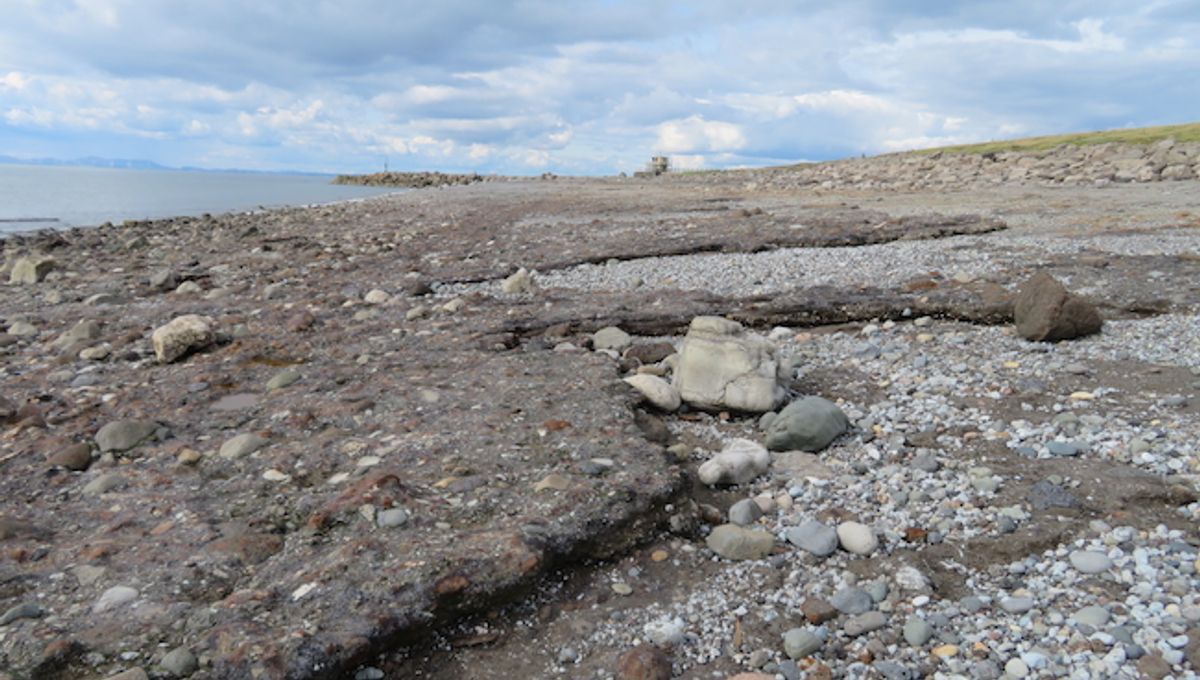
Human trash is wreaking all sorts of havoc on the natural world, including, according to recent research, accelerating rock formation in some parts of the globe.
Thanks to a coin and a drinks can tab, researchers from the University of Glasgow’s School of Geographical and Earth Sciences discovered a new type of rock in West Cumbria, England, which has formed in as little as 35 years. Under normal circumstances, rocks form over thousands, if not millions, of years, which means that this waste-driven rock formation process is “unprecedentedly fast”, the study authors write.
It is the first fully documented and dated example of what the team have termed a “rapid anthropoclastic rock cycle”, which behaves like natural rock cycles but includes human material and happens over much shorter timescales. The researchers believe this phenomenon will have a negative impact on ecosystems and biodiversity, and is likely happening at other industrial sites around the world.
“For a couple of hundred years, we’ve understood the rock cycle as a natural process that takes thousands to millions of years,” Dr Amanda Owen, one of the study’s co-authors, said in a statement.
“What’s remarkable here is that we’ve found these human-made materials being incorporated into natural systems and becoming lithified – essentially turning into rock – over the course of decades instead. It challenges our understanding of how a rock is formed, and suggests that the waste material we’ve produced in creating the modern world is going to have an irreversible impact on our future.”
The team focused their research on Derwent Howe in West Cumbria, a major iron- and steel-making area in the 19th and 20th centuries. Over the course of its industrial history, the area accumulated 27 million cubic meters (953 million cubic feet) of slag – a by-product of the iron and steel industries – which has now formed cliffs of waste material slowly being eroded by the tides.
Analyzing samples from 13 sites along the coast, the scientists identified deposits of calcium, iron, magnesium, and manganese – elements that get eroded by seawater and air to create natural cements that bind sedimentary rocks together, such as calcite, goethite, and brucite.
As well as finding natural cements within the rock, the team discovered anthropogenic material, including a coin and an aluminum can tab, indicating the rock must have formed within the last four decades.
“We were able to date this process with remarkable precision,” said Dr John MacDonald, a co-author of the study. “We found both a King George V coin from 1934 and an aluminium can tab with a design that we realised couldn’t have been manufactured before 1989 embedded in the material.”
“This gives us a maximum timeframe of 35 years for this rock formation, well within the course of a single human lifetime. This is an example in microcosm of how all the activity we’re undertaking at the Earth’s surface will eventually end up in the geological record as rock, but this process is happening with remarkable, unprecedented speed.”
Because slag contains all the components it needs to turn into rock when exposed to the elements, the same process is likely happening at similar coastal slag deposits around the world, according to Dr David Brown, the study’s third co-author. And that could spell disaster for the planet if left unchecked.
“[The] rapid appearance of rock could fundamentally affect the ecosystems above and below the water, as well as change the way that coastlines respond to the challenges of rising sea levels and more extreme weather as our planet warms,” Owen surmised. “Currently, none of this is accounted for in our models of erosion of land management, which are key to helping us try to adapt to climate change.”
The study is published in the journal Geology.
Source Link: Human Trash Is Expediting Rock Formation, From Millions Of Years To Just 35